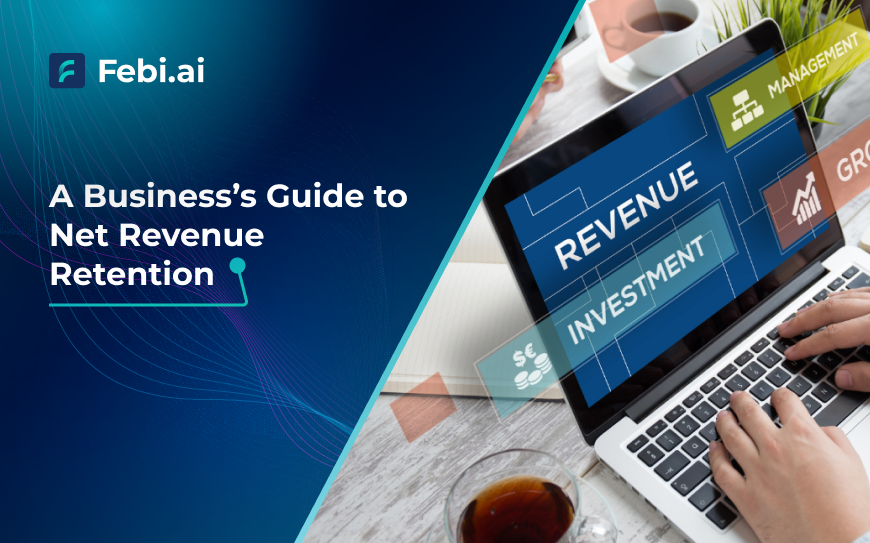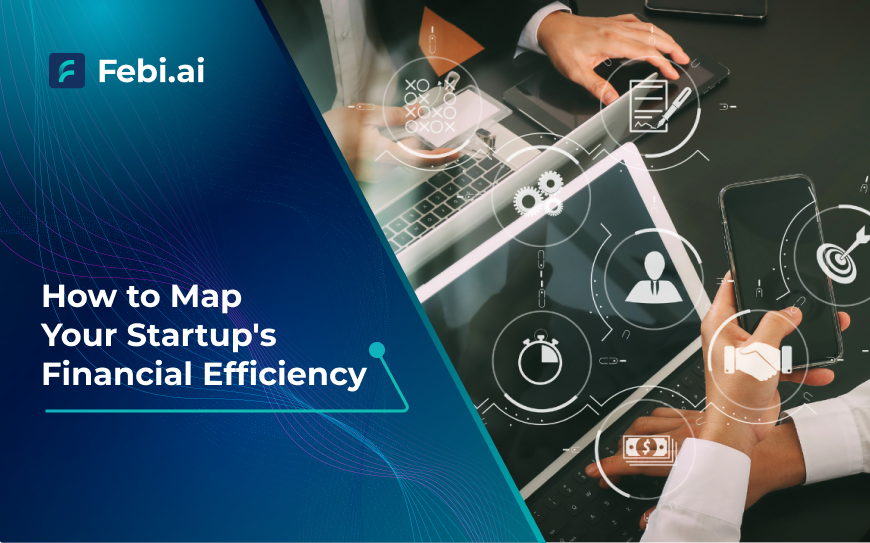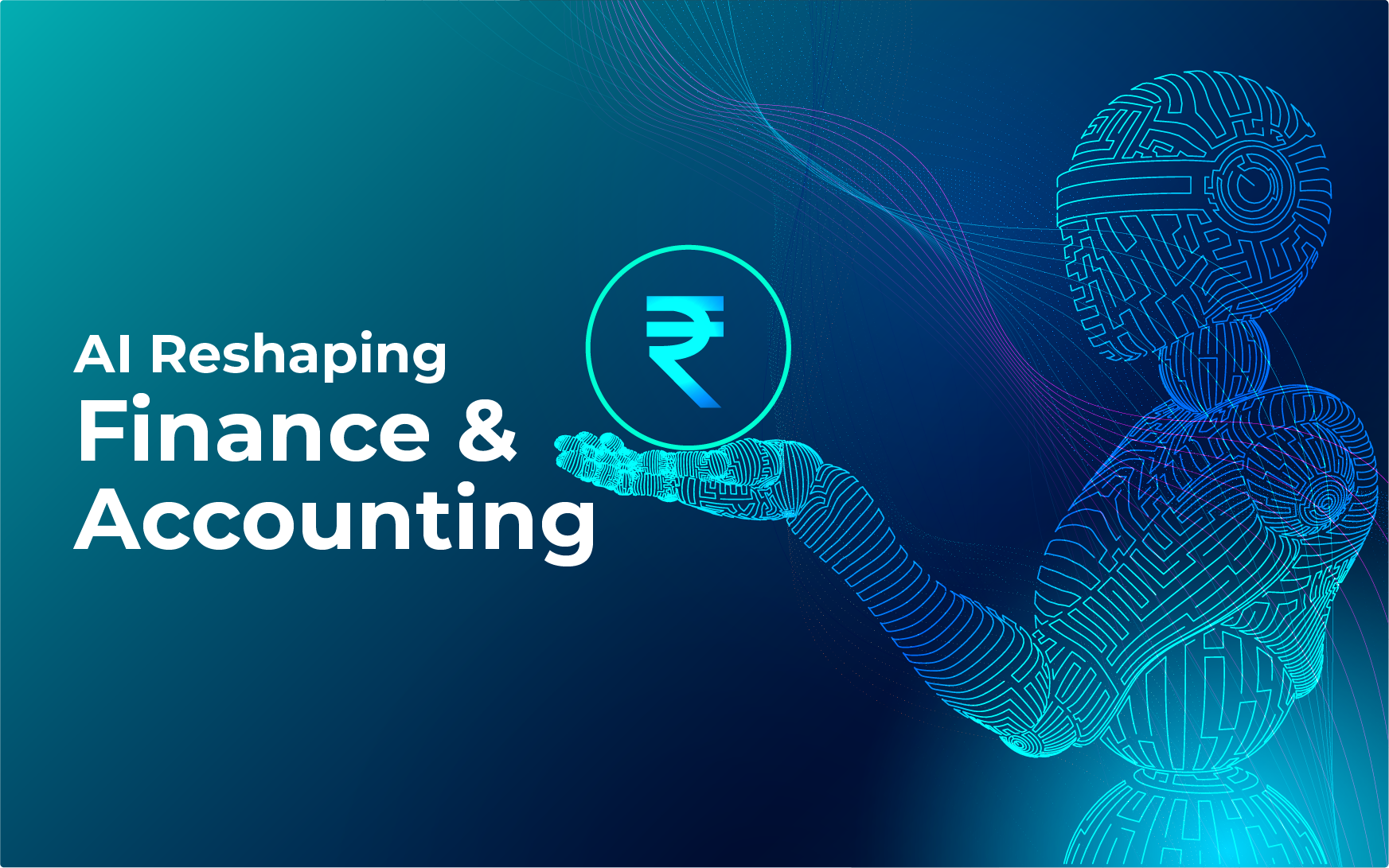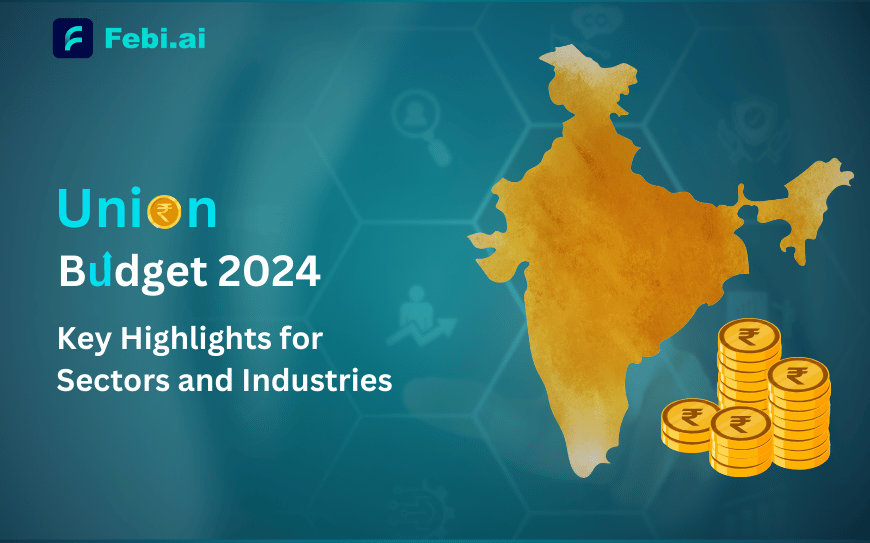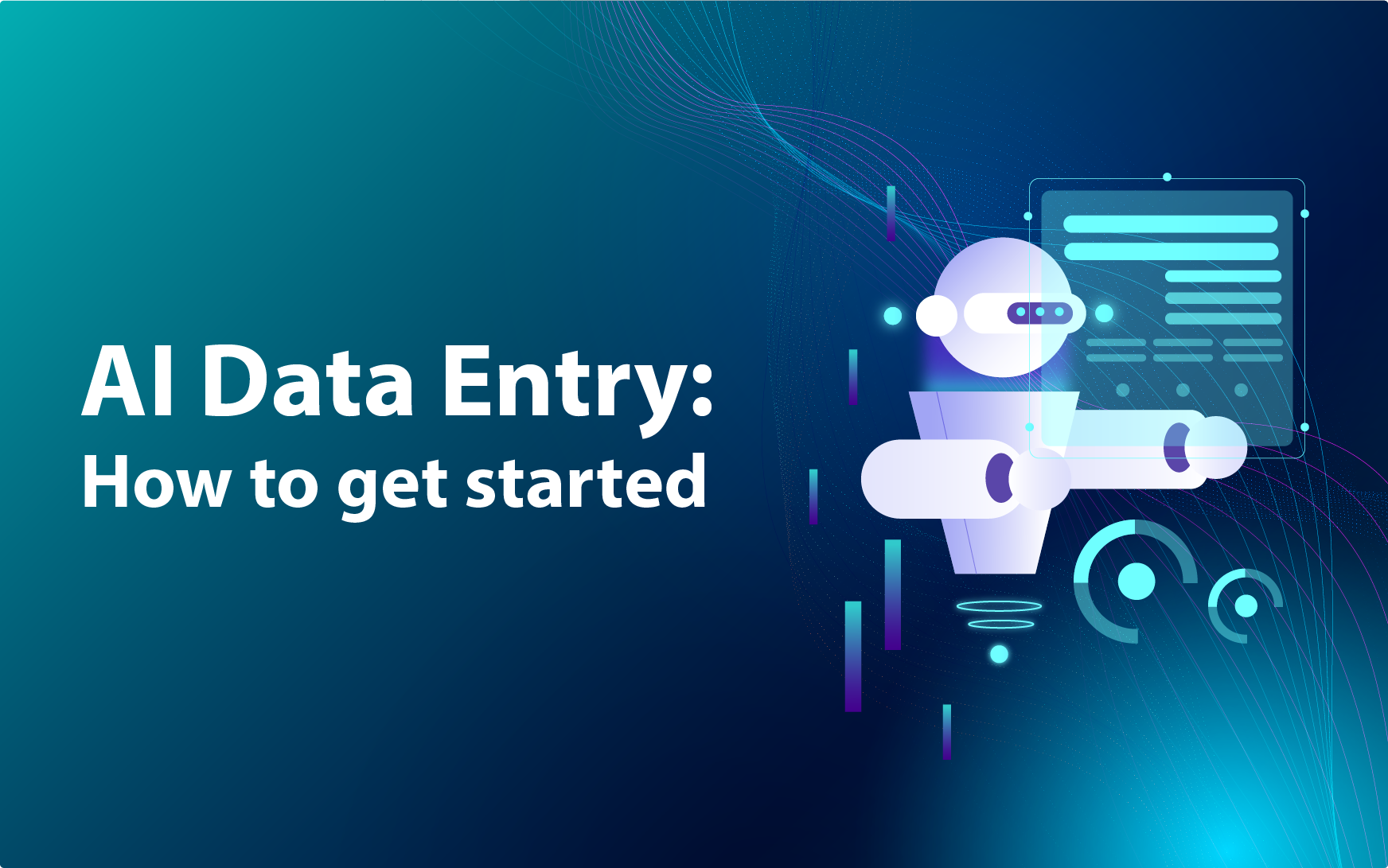Imagine yourself as the founder of a growing SaaS startup. Your product is gaining some good traction, customers and clients are signing up, and the future looks promising. Yet, despite the new clients using the software, your revenue is stagnant—or worse, it’s declining.
The most common question entrepreneurs wonder is—Where is all my money going? or precisely—Why isn’t my revenue growing despite new customer acquisitions? This scenario is faced by entrepreneurs and startup founders, intensely focused on customer acquisition but may be overlooking a crucial metric: Net Revenue Retention (NRR).
NRR isn’t just another number; it’s more than another financial metric. As a matter of fact, it is an important financial measure of your company’s financial health. In the subscription-based business model, typically known as SaaS, the Net Revenue Retention is especially critical, serving as a reflection of how well you retain and expand your existing user base. Understanding and optimizing your NRR could be the difference between barely surviving and thriving in today’s competitive business environment.
Table of Contents
What is Net Revenue Retention?
Net Revenue Retention (NRR) measures the percentage of recurring revenue retained from your existing customers over a specific period, accounting for expansions, downgrades and churn.
Unlike Gross Revenue Retention (GRR), which considers the revenue retained from existing customers without accounting for upsells or downsells, NRR or net retention rate provides a more comprehensive view. NRR factors in all customer activities, offering a clearer picture of your business’s financial health.
How to Calculate Your Company’s Net Revenue Retention
Calculating NRR is straightforward. You can use this formula to calculate your company’s Net Revenue Retention (NRR) as per convenience—

Let’s break down these terms:
- Starting MRR (Monthly Recurring Revenue): This indicates your revenue generated from your existing customers at the start of the period. The MRR serves as the baseline for measuring growth or decline.
- Expansion Revenue: This is the additional revenue gained from upselling or cross-selling to existing customers. Your expansion revenue could come from existing customers upgrading their subscriptions, purchasing additional features, or adding more users.
- Revenue Lost from Churn and Downgrades: This is the revenue lost due to customers leaving (churn) or downgrading their subscriptions. Churn can occur for various reasons, including dissatisfaction with your product, better offers from competitors, or changes in the customer’s needs.
Example: Suppose your starting MRR or monthly recurring revenue is ₹10,00,000. During the month, you successfully upsell to several customers, resulting in ₹2,00,000 in Expansion Revenue. However, you also lose ₹1,00,000 due to churn and downgrades. Your NRR would be calculated as follows:
NRR = (₹10,00,000 + ₹2,00,000 – ₹1,00,000) / ₹10,00,000) × 100 = 110%
An NRR of 110% suggests that your company is not only retaining customers but also growing revenue from your existing customer base—a strong sign of business health.
Gross Revenue Retention Vs Net Revenue Retention
Understanding the difference between Gross Revenue Retention (GRR) and Net Revenue Retention (NRR) is essential for a comprehensive analysis of your company’s financial performance.
Gross Revenue Retention (GRR): GRR measures the percentage of revenue retained from your existing customers. This is excluding any additional revenue gained from upsells. GRR is a conservative metric, focusing on the core revenue from your customer base without considering growth through expansions.
If you see a high GRR, know that your business has a strong customer loyalty and satisfaction, and you’re retaining a significant portion of the initial revenue.
Net Revenue Retention (NRR): NRR, on the other hand, provides a broader view by including revenue gained from upsells and cross-sells and subtracting revenue lost due to churn and downgrades.
NRR is a more dynamic metric that reflects retention as well as the revenue expansion within your customer base. A high NRR indicates that not only are you retaining customers, but you’re also successfully increasing the value of those customers over time.
In short, while the GRR tells you how well you’re holding onto your revenue, NRR gives you insight into how well you’re growing that revenue. Both metrics are crucial, but NRR is often a more powerful indicator of long-term business sustainability and growth potential.
Let’s look at a tabular comparison for better clarity.
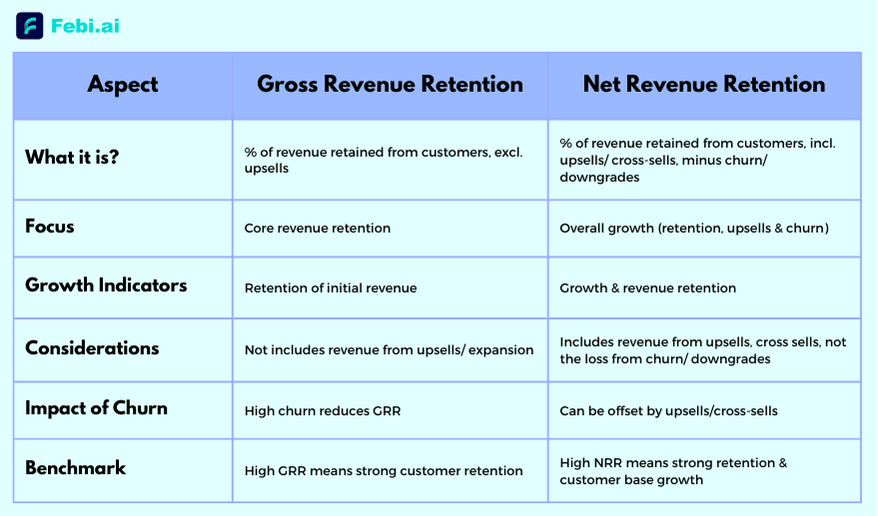
What is a Good Net Revenue Retention Rate in Startups
The ideal NRR varies depending on industry and business stage, but here are some general benchmarks:
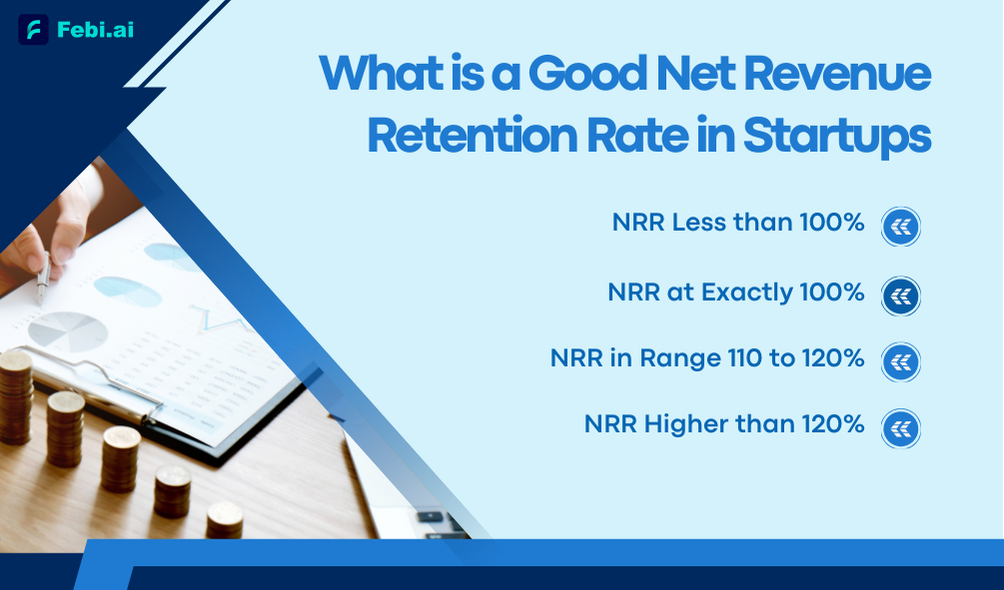
1. NRR Less than 100%
This is a danger sign. If your Net Revenue Retention rate is below 100%, it means your business is shrinking—you’re losing more revenue through churn and downgrades compared to what you gain through expansions. This situation requires immediate attention to reduce churn and improve user satisfaction.
2. NRR at Exactly 100%
An NRR of 100% indicates that you’re retaining your existing revenue but not growing it. While this is better than losing revenue, it cannot be sustained in the long run. Your goal should be to exceed 100%, indicating that you’re not only retaining existing customers but also improving the value.
3. NRR in Range 110 to 120%
This is a healthy range for most startups. A NRR of 110 to 120% indicates your business is not only retaining customers but also generating significant growth from your customer base. Companies in this range are usually on a solid growth trajectory and are likely to scale effectively.
4. NRR Higher than 120%
An over 120% NRR is exceptional and is mostly seen in high-growth startups with strong product-market fit. This range of NRR tells that your customers find increasing value in your offerings, resulting in substantial upsell opportunities and low churn rates. This level of NRR is a strong indicator of future growth potential.
Top Strategies to Improve the NRR in Your Business
Achieving and maintaining a high Net Revenue Retention (NRR) is crucial for the long-term success of any business, particularly in subscription-based models. A high NRR not only indicates strong customer retention but also demonstrates your ability to grow revenue streams from your existing customer base. Here are some in-depth strategies to help boost your NRR:
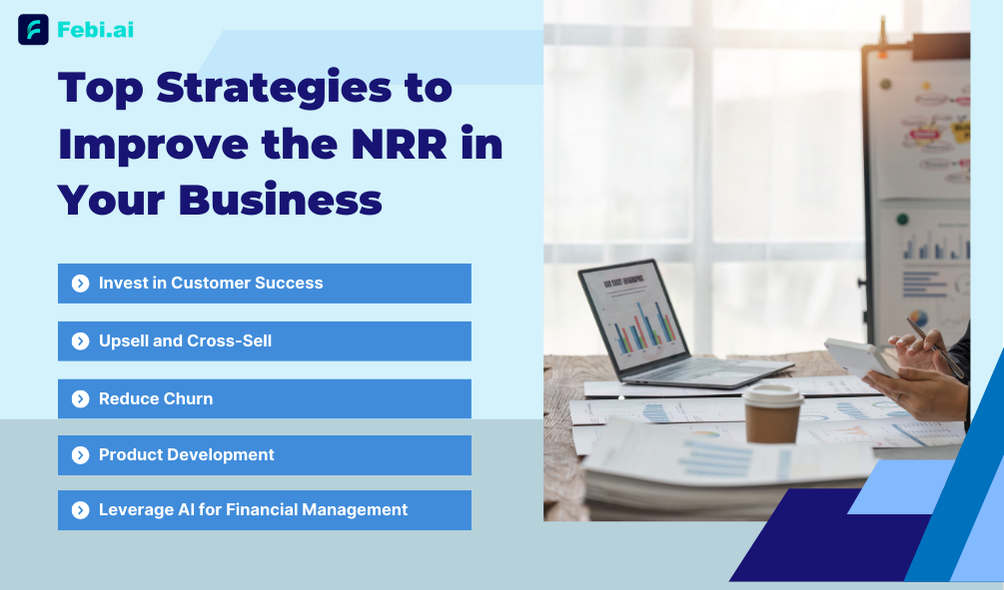
Invest in Customer Success
- Proactive Support: A proactive approach to customer support, is when you don’t just wait for customers to reach you with their challenges and issues. Instead, you proactively check in with your customers to ensure they are fully utilizing and benefiting from your product—on a regular basis.
- Customer Training: Educate your customers! Training your customers is an important effort to reduce your churn rates and should be an ongoing process. Implement a comprehensive customer education program that includes webinars, tutorials, knowledge bases and help centers. Make sure these are easily accessible and designed to educate customers to maximize the use of your product.
- Customer Feedback Loops: Understanding your customer’s evolving needs should be on your priority list. For this, build a clear and quick feedback loop. Regularly solicit feedback using surveys, interviews and customer advisory boards.
Providing personalized support, tailored to their specific requirements and goals, you can build deeper relationships and reduce the churn rates. Additionally, proactive support can help identify issues before they escalate, providing you with an opportunity to resolve them quickly and efficiently.
Also, keep updating it as per your changes in features or new service additions. Well-informed customers are more likely to appreciate the product/service offerings, resulting in higher satisfaction and increased loyalty.

Act on this feedback by making necessary adjustments to your product or service. When customers see that their input directly impacts product development, they feel heard and are more likely to stay loyal. Moreover, this approach not only improves your retention rates but can also lead to higher upsell probabilities.

Upsell and Cross-Sell
- Personalized Recommendations: A research by McKinsey suggests that 71% of customers expect brands to provide customized interactions and experiences. Also, 76% feel frustration when it does not happen. This is why you must utilize data analytics to gain insights into customer behavior and preferences.
- Bundle Your Offers: Bundling services or features is one of the most common and effective ways to push your customer spends higher. Create compelling packages that combine core services with additional features at a discounted price.
- Strategic Timing: Timing is of essence when upselling and cross-selling. It is best to strategically introduce these offers at moments when customers are most likely to be receptive. This could be just after they’ve achieved a significant milestone with your product or during renewal periods. By aligning offers with key moments in the customer journey, you increase the likelihood of conversion.
Analyzing usage patterns and customer’s purchase history, helps you identify opportunities to present personalized upsell and cross-sell offers. It is seen that tailored recommendations resonate more with users as they address specific pain points or improve the value derived from your service or product. As a result, it makes them more inclined to upgrade or purchase additional services.
Offer bundle recommendations based on personal requirements and should be designed to meet the unique needs of different customer segments, offering them value compared to instances when components are purchased separately. This increases revenue and deepens customer engagement with your product ecosystem.

Reduce Churn
- Churn Analysis: Conduct a detailed churn analysis to understand why customers are leaving. It involves segmenting churned customers by demographics, behavior, and product usage patterns to identify commonalities.
- Retention Campaigns: Implement targeted retention marketing campaigns for customers identified as at-risk. These marketing campaigns could include personalized outreach, offering special incentives such as discounts or exclusive features, and provide dedicated support to address issues.
- Customer Onboarding: A strong onboarding process can make a significant difference in customer retention. Ensure that new customers are guided through a well-structured onboarding program that helps them understand how to get the most out of your product. This reduces the initial learning curve and increases the likelihood that they will stick with your service.
Once you have a clear picture, you are in a position to take corrective actions—improve product features, refine your onboarding process, or work on your customer support. Address the root causes of churn to improve retention rates.

The goal is to re-engage your existing customers before they decide to unsubscribe or look for a different product or service. Retention campaigns are most effective when they are personalized, addressing the specific requirements and concerns of individual customers.
Product Development
- Continuous Improvement: A stagnant product is the perfect recipe for customer attrition. Regularly update and enhance your product based on both customer feedback and emerging market trends.
- Feature Prioritization: Not all features are created equal. Or let’s put it this way—not all features will be important for your users. Thus, you should focus development efforts on capabilities that provide the most value to your customers, especially those that drive engagement and can lead to upsell opportunities.
- Innovation and Adaptation: To stay competitive and successful, you need to constantly reinvent the wheel in a way that your product meets future customer needs. This could involve exploring new tools and technologies, integrating with other platforms/software, or expanding your product offering. Innovation keeps your product relevant and ensures that customers remain engaged over the long term.
This doesn’t just mean adding new features—it also involves refining existing ones, improving usability, and charting a product evolution roadmap, parallel to your customer needs. A product that continuously improves is more likely to retain its user base and attract new ones.
For this, you can use customer feedback, usage data, and market research to prioritize features that will have the biggest impact on customer satisfaction and revenue growth.
Leverage AI for Financial Management
AI is transforming financial management by bringing automation and predictive capabilities to the forefront. Febi.ai automates the monitoring and optimization of your financial metrics, such as Net Revenue Retention (NRR). Its real-time financial reports, ratios and statements provide live insights into revenue trends, so you can swiftly identify and address any issues that could affect user retention. This automation not only saves valuable time but also ensures accuracy when tracking complex financial data, reducing the risk of human error.
Predictive analytics is another area where AI shines. By leveraging AI, you can anticipate customer behavior with greater precision. These models help identify customers who may be at risk of churning or those who are most likely to respond to upsell offers. Acting on these insights allows you to proactively improve customer retention and drive revenue growth. Additionally, AI-driven predictive analytics can forecast the potential impact of various strategies on your NRR, empowering you to make informed, data-driven decisions.
Moreover, AI enhances financial planning by analyzing large datasets to provide valuable insights into revenue forecasts, budget allocations, and investment opportunities. This capability helps you optimize your financial strategy, ensuring that you are making the best decisions to maximize your NRR and overall financial performance. Integrating Artificial Intelligence into your financial management processes, helps stay ahead of trends, make smarter decisions, and achieve better outcomes for your business.
